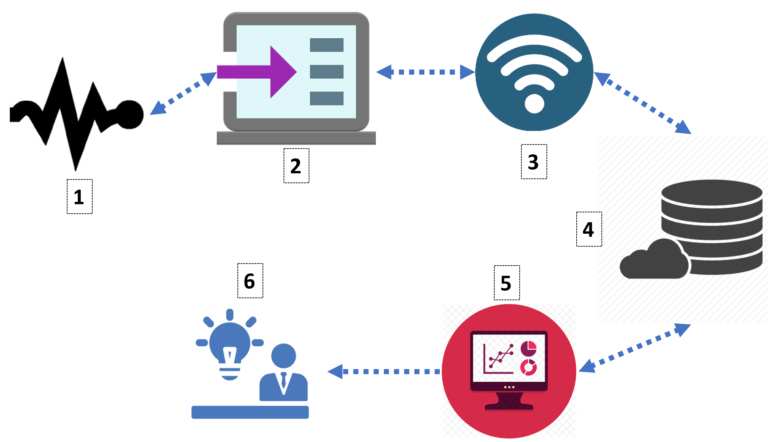Enabling Energy with IoT

Energy combined with IoT can achieve wonders in terms of increased savings & enhanced performance. You can refer to our previous blog (http://www.ushva.com/blog/2018/08/13/love-is-on-the-cloud-energy-iot/) to know more about the effects of integrating Energy & IoT. Now we need to understand the enablement method for the marriage of Energy – IoT. It can be divided into 6 specific actions:
1) Sensing
2) Data Fetching
3) Data Transmission
4) Database Management (Online / Offline)
5) Data Analysis
6) Actionable Insights
We shall briefly walk through all the mentioned actions. Sensing is the part where various energy parameters such as voltage, current, power factor, etc. are measured. This can be done using tools such as energy meters, specific sensors, sensors connected via PLCs, etc.
The 2nd step is to fetch the relevant parameters from the devices. This can conventionally be done using data loggers. Post data logging, in the 3rd action the data is sent to the online/offline database server using one or more of the communication protocols such as Wi-Fi, GSM, LoRaWAN, NBIoT, LAN connection, etc. IoT Gateways are typically used for this action.
Actions 2 & 3 can be carried out using a single device (IoT Edge Device) which shall be a combination of both data logger and data transmitter. Such devices can be of plug & play format to make the life of solution implementers easy than the usual hassle of doing the intensive configuration of the data loggers and gateways.
In the 4th action, data gets stacked in an organized manner on a cloud server or an on-site server. We can use a lot of available cloud services such as IBM, Amazon Web Services, Alibaba Cloud Services. These cloud service providers have extensive service offering. They also offer the services required in the 5th and 6th action wherein you can use preconfigured tools for analytics along with their big data analytics and machine learning services. Some people prefer to use their own analytics and machine learning algorithms tailor-made for their specific applications. The analysis is used to identify the actions to be taken to improvise the energy performance and increase the savings. The whole idea of implementing IoT is to improvise the scenario and that can only be done by taking appropriate actions based on the analysis of the data we collect.
“Something that cannot be measured cannot be improved.”
The above steps are the most generic actions that are required for a successful marriage of Energy & IoT.
P.S.: The next blog shall put forward some of the available & upcoming tools to integrate Energy & IoT. Stay tuned!

